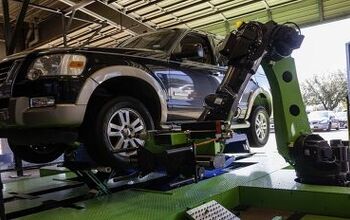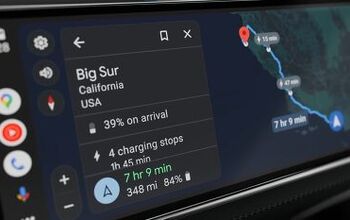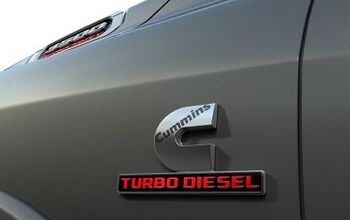Government Retooling Loans: On Hold For GM and Chrysler?
The Department of Energy’s $25b Advanced Technology Vehicle Manufacturing Loan program was very nearly used as a slush fund to keep GM and Chrysler afloat during the dangerous days leading up to the federal auto bailout. Though President Bush’s decision to use TARP to rescue America’s failing automakers took away the need to tap the so-called “retooling loan” program to fund America’s auto bailout, that decision also contributed to a long delay in the allocation of the ATVM loans. Because the loans require applicants prove “financial viability,” GM and Chrysler’s requests (which account for $17.4b out of the remaining pool of $16.7b in non-allocated loans) have been on hold, and with them, every other automaker still seeking approval for its requests. And now, with no word from the DOE on the loan program since last April, congress is agitating for the DOE to make with the loans already. Senator Diane Feinstein captures the frustration in a letter published by the Detroit News
“On multiple occasions, the department has missed internal deadlines for initial decisions, term negotiations, final decisions and loan closure,” she wrote, saying the department failed to give applicants “a clear timeline.”
But did the DOE miss deadlines and string automakers along out of negligence, or because it had to wait in order to fulfill the loan program’s mission, namely supporting the bailed-out automakers?
This question doesn’t have an easy answer: after all, few in the private sector expect rapid action from governmental bureaucracies. The slow allocation of federal loans really shouldn’t come as a surprise to anyone. At the same time, the ATVM program has been in place since 2008, and automakers like Ford, Nissan, Tesla and Fisker have jointly received some $8.3b for programs ranging from Tesla and Fisker’s EV luxury car projects to Nissan’s Leaf and more fuel-efficient versions of Ford’s mass-market models. If the DOE could approve billions for non-bailed-out automakers, surely there is nothing out of the ordinary going on with the DOE’s bureaucracy. Curious minds must, therefore, look to pending requests for an explanation of their delay.
And those requests tell an interesting story. With $8.3b of the program’s loans already spent, GM’s $14.4b request would, if approved, soak up nearly all remaining funds. In response to both this reality and Fiat’s changes to Chrysler’s efficiency priorities, the Pentastar has reduced its loan request from $8.55b to “around $3b.” Had Chrysler not made its request reduction, the two bailed-out automakers would have accounted for all but $1b of the retooling loan program’s funds. Even with that reduction, Chrysler and GM’s outstanding requests amount to some $700m more than the program has left to give out… and that’s not counting the smaller firms still hoping for a piece of the pie, including ZAP, ALTe, Aptera, Coda and more. Or the fact that
because the costs have been higher than expected, the Energy Department won’t be able to loan the entire $25 billion, Sen. Debbie Stabenow, D-Lansing, said. Auto executives say the agency may only be able to loan another $10 billion.
The fact that GM and Chrysler are requesting every remaining penny in the ATVM program, combined with delays to the payout of remaining funds sends a fairly unambiguous message: the remaining ATVM money will all be going to GM and Chrysler. Though initial delays to paying out ATVM money to GM and Chrysler were due to the program’s “viability” clause, those concerns were (in theory) circumvented by bailing out those two companies. More recently, GM’s request was “suspended” while it entered the IPO process, an issue that could now be holding up Chrysler’s request. Another concern could be political: with the bailouts still a divisive issue with the American people, the White House may be seeking to delay giving the automakers it owns the rest of the ATVM money as a way of avoiding accusations of political favoritism.
In any case, the fact that the DOE is dragging its heels in deciding on GM and Chrysler’s loan requests have sent the desired message to at least one loan applicant. Supplier Tenneco had requested a meager $24m in loans to produce higher-efficiency versions of its parts, but has abandoned its quest (along with many other suppliers) for ATVM support last Spring, saying
We made a business decision to self-fund the program
Which is probably the way to go. With tens of billions of taxpayer money already sunk into GM and Chrysler, the government would have to be crazy to not send the remaining ATVM money their way as well. Will it stifle innovation and competition? Sure, but so does bailing out failed companies… and that ship has already sailed. Meanwhile, GM has said that it’s relying on ATVM money for its “shorter-term liquidity assumptions” so giving The General less than $10b is probably not an option. Chrysler’s Sergio Marchionne addsI can’t stop the machine. So far, I have been able to manage it” without the loan, but there will come a point in time when I have to go into the kitty and use other cash for this.All of which adds up to a few hard-and-fast realities: first, if you’re waiting on an ATVM loan and your name isn’t “GM” or “Chrysler,” it’s probably best if you just give up; and second, those two automakers and the White House should get their heads together and try to figure out a way of making this forthcoming $16b+ loan sound like it’s not another just tranche of the bailout. Because now that it put the entire program on hold long enough for the two bailed-out automakers to meet its basic qualifications (i.e. viability), that’s certainly how it will be perceived.More by Edward Niedermeyer
Latest Car Reviews
Read moreLatest Product Reviews
Read moreRecent Comments
- Tassos Good Used Classic Car. Price is right too.
- Fred Just as everyone agrees that Tesla chargers for everyone, he quits.
- Golden2husky Seems like a poor business move - Tesla could basically control most of the charging network in the US for the foreseeable future. Something is short circuiting in Musk's brain. Maybe too much Orange Kool-aid. Or he is also in love with a pigeon. Regardless this is bad news for sure.
- Tassos The manager of the massage parlour I frequent drives one of these. She won’t acknowledge my presence though, despite me being there 3 times a week. I guess I’m lucky they even let me back there after the camera incident. I HAD NO IDEA MY PHONE WAS RECORDING!
- Oberkanone I'm fan of Celica 1985-2006. 1976 I don't care.


































Comments
Join the conversation
Good article, Ed. How can GM request such a large slice of the pie? Ford only got $6b, and they're using it to retool truck plants for car production and increase fuel economy of most of their lineup, including electrifying some of it. So GM is either doing the same thing on double the platforms, or they want the government to foot the whole bill for the job, where Ford is only using the money to supplement their own investment. I have a hard time believing it's the former. If it's the latter, I think GM is getting a bit too used to spending someone else's money.